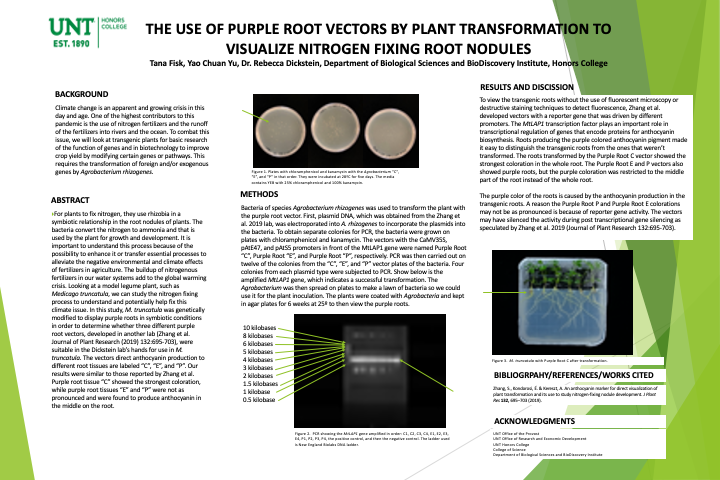First Name:
TanaLast Name:
FiskMentor:
Dr. Rebecca DicksteinAbstract:
For plants to fix nitrogen, they use rhizobia in a symbiotic relationship in the root nodules of plants. The bacteria convert the nitrogen to ammonia and that is used by the plant for development. It is important to understand this process because of the possibility to enhance it or transfer essential processes to alleviate the negative environmental and climate effects of fertilizers in agriculture. The buildup of nitrogenous fertilizers in our water systems add to the global warming crisis. Looking at a model legume plant, such as Medicago truncatula, we can study the nitrogen fixing process to understand and potentially help fix this climate issue. In this study, M. truncatula was genetically modified to display purple roots where the plant fixed nitrogen in order to determine whether three different purple root vectors, developed in another lab (Zhang et al. Journal of Plant Research (2019) 132:695-703) were tested for their performance M. truncatula. The vectors direct anthocyanin production to X, Y, and Z root tissues are labeled “C”, “E”, and “P”. Our results were the same in Zhang’s experiment that purple root tissue “C” showed the strongest coloration, while purple root tissues “E” and “P” were not as pronounced, but in the middle on the root.Poster:





